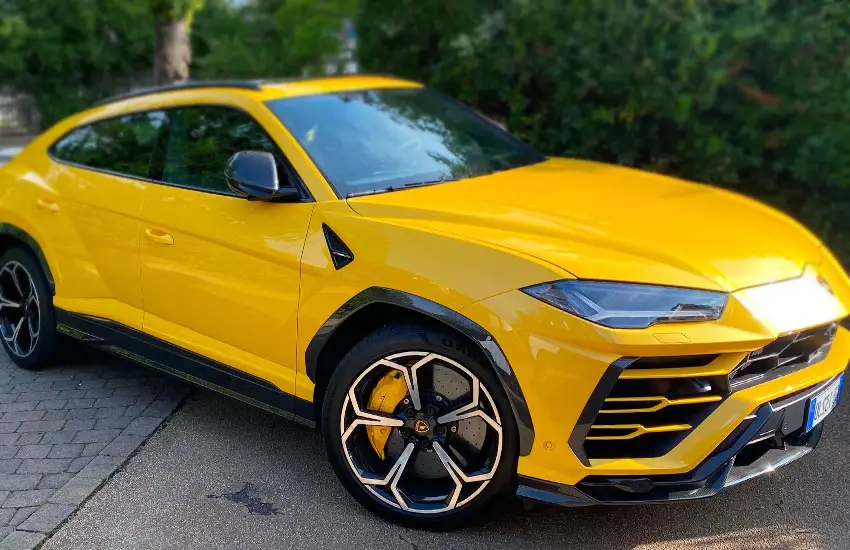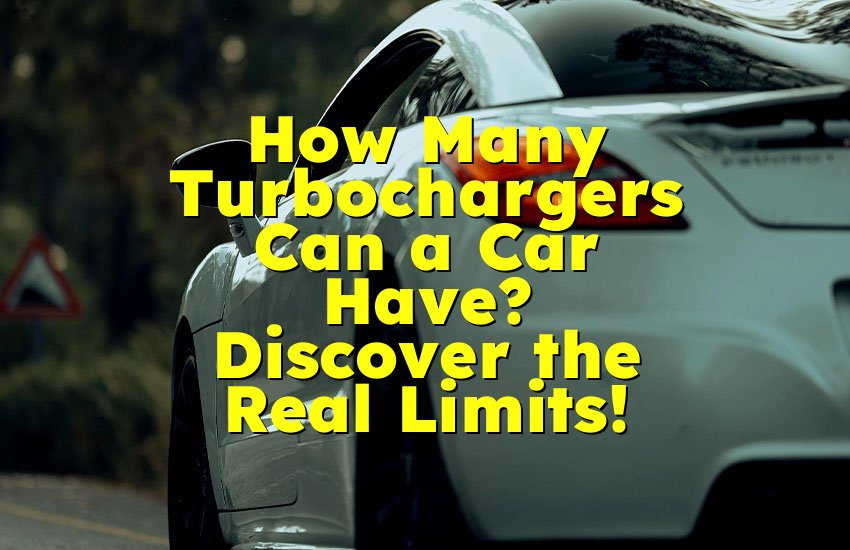As an Amazon Associate, I earn from qualifying purchases at no extra cost to you.
How to Tell If Your Car Has a Kill Switch: Your Ultimate Guide
Ever wonder if your car has a secret kill switch hidden somewhere? Sounds like something out of a spy movie, right? Well, it's not as mysterious as it sounds. A kill switch is a nifty feature that can help protect your car from theft or even keep it from running when it’s not supposed to. Whether you've heard rumors about it or simply want to check your car's security features, this guide will walk you through everything you need to know. So, let's dive in!

Understanding the Kill Switch Concept
A kill switch is a device installed in some cars to cut off the engine's power or prevent it from starting altogether. It's an extra layer of protection designed to stop thieves from hotwiring and driving off with your car. Think of it like the car's own little security guard, silently doing its job to keep your vehicle safe. While this may sound like something only high-tech cars or expensive models have, that's not always the case.
What Exactly Does a Kill Switch Do?
The main goal of a kill switch is to stop the engine from turning on or running. It works by disconnecting the flow of electricity to the engine or other essential systems, such as the fuel pump or the ignition system. Without power to these critical components, your car simply can't start. Some kill switches may even disable other parts, such as the fuel system, so that your car can run but won't go far.
How Do You Know If Your Car Has One?
Unlike other car features, a kill switch might not be as obvious. After all, it's a security measure designed to work in the background. Some cars come with a visible switch or button, but others may have it hidden somewhere out of sight. If your car has an aftermarket kill switch, you may not even know it's there unless you're specifically told about it. But don't worry—there are ways to tell, which we'll cover in the next sections.
Why Do People Install Kill Switches?
The main reason people install kill switches is to prevent car theft. It’s an extra step to protect your car from being stolen, especially in areas where car theft is more common. Sometimes, kill switches are added to older cars as a DIY anti-theft measure, or they come as part of a security package when you buy a new vehicle. Some people also install them for peace of mind, knowing they have control over their car's starting system.
In the next sections, we'll look into the signs that your car might have a kill switch, how to find it, and how to make sure it's working properly.
Key Signs of a Kill Switch in Your Vehicle
There's no need to be a detective to figure out if your car has a kill switch. With a little attention, you can spot a few key signs that might give you the answer. Sometimes the signs are subtle, and other times, they're as obvious as a blinking light. Let's look at some common indicators that can point to the presence of a kill switch in your vehicle.
Unusual Switches or Buttons
If you've noticed an extra button or switch in your car that you've never really used, it could be a kill switch. These are often hidden away to make it more difficult for someone to disable them. The switch might be in an unexpected spot, like beneath the dashboard, under the steering wheel, or in the glove compartment. Some vehicles even have a toggle switch that's disguised as something else, like a cigarette lighter. If you're not sure what a button or switch does, it's worth checking the owner's manual to confirm its purpose.
Lights or Warning Signals
Many modern cars with kill switches have built-in indicators that show if the system is activated or malfunctioning. These lights or warning signals could be on your dashboard or inside the ignition. Sometimes, you might see a light flash when you attempt to start the car, signaling that the kill switch is blocking the engine from running. If you've ever had an odd light flash on your dashboard without any clear explanation, that might be a clue.
Difficulty Starting the Car
If you've ever tried starting your car and encountered a sudden, unusual difficulty, the kill switch could be involved. You might turn the key or press the start button, but the car simply refuses to start. In some cases, the engine might turn over, but it won't stay running. This is because the kill switch is preventing power from reaching the essential parts of the vehicle, like the fuel pump or ignition system. Of course, other issues like dead batteries or faulty starters can cause similar symptoms, so it's always worth troubleshooting.
Custom Installations
In some cases, you might know directly whether your car has a kill switch because you or a previous owner installed it. Aftermarket kill switches are common in older cars or in vehicles where extra security is desired. If you've ever had an alarm or tracking system added to your vehicle, the installation of a kill switch might have been included as part of that service. You can often tell by looking at your car's service records or asking the mechanic who installed your vehicle's security features.
How to Locate the Kill Switch in Your Car
If you're convinced that your car has a kill switch but aren't sure where it's hiding, don't panic—there are ways to track it down. In most cases, kill switches are installed discreetly, which means they're not meant to be easy to find by thieves. But with a little effort, you can locate it yourself. Here's a step-by-step guide on how to find your car's kill switch.
Check the Owner's Manual
The first place you should look is your car's owner's manual. If your vehicle comes with a built-in kill switch, the manual may provide details on where it's located and how it functions. Many car manufacturers include a section about security features, which will tell you if your car is equipped with one. If you're unable to find the manual or if it doesn't mention a kill switch, don't worry—there are other ways to figure it out.
Inspect Your Dashboard and Steering Column
If the manual doesn't give you any leads, start looking around the dashboard and steering column. Kill switches are often placed in these areas to keep them hidden but still accessible. You might find a hidden button or a small switch tucked away under the dashboard near the steering wheel. Check the areas where you wouldn't normally expect to find anything, like near the pedals or under the dashboard trim.
Look for Signs of Aftermarket Additions
Sometimes, kill switches are added after the car is built, especially in older models. Look around the car for any signs of aftermarket installations. This could include extra wiring, additional fuses, or modifications near the ignition. If you notice any parts that don't look like they belong, there's a chance a kill switch is tucked into that area.
Consult a Professional
If you've gone through all the obvious areas and still can't find the kill switch, it might be time to ask a professional. A trusted mechanic or car security expert can help you pinpoint the location of the switch. They can also test it to make sure it's functioning properly. If you're not comfortable checking the wiring or dashboard yourself, getting a professional's help is always a safe option.
Common Methods of Activating and Deactivating the Kill Switch
Now that you know what a kill switch is and how to find it, let's talk about how it works. In most cases, the process of activating and deactivating a kill switch is simple and straightforward. It's designed to be something you can easily operate if needed but not so obvious that a thief could use it against you. Here's a closer look at the methods used to control the kill switch.
Using a Physical Switch or Button
One of the most common ways to activate a kill switch is by using a physical switch or button. These are often located in out-of-sight areas to keep them hidden from anyone who doesn't know about them. For example, the switch could be underneath the dashboard, under the driver's seat, or inside the glove compartment. In some cars, the switch is a simple toggle that you can flip to activate or deactivate the kill switch. This method is commonly found in older cars or vehicles with aftermarket security systems.
Key-Based Systems
Some kill switches are designed to work with your car's ignition key. These systems may involve a special key that activates the kill switch. When you turn the key to start the car, it automatically bypasses the kill switch, allowing the engine to start. If you use a regular key, the kill switch remains engaged, and your car won't start. This system is convenient because you don't have to worry about pressing a hidden button or switch every time you start the car. Just use the correct key, and you're good to go.
Remote Control or Smartphone Apps
Modern kill switches are getting even more high-tech, with remote control options or smartphone apps that allow you to activate or deactivate the system. If you have a smart security system installed in your car, you might be able to control the kill switch via an app on your phone. This adds a layer of convenience and control, as you can turn off the kill switch from anywhere. Some systems even allow you to track your car's location or monitor other security features from your phone.
Manual Disconnection
In some cases, you might need to manually disconnect the kill switch if it stops working properly or if you forget the activation method. This might involve accessing the wiring or components under the dashboard or around the ignition system. If you're not comfortable working with the electrical systems in your car, it's best to leave this step to a professional mechanic who can reset or disconnect the kill switch safely.
Troubleshooting a Faulty or Malfunctioning Kill Switch
Like any car feature, the kill switch isn't immune to problems. If you've encountered difficulty starting your car or if it seems like the kill switch isn't working properly, there are a few steps you can take to troubleshoot the issue. The key is figuring out whether the kill switch itself is malfunctioning or if there's another underlying problem.
Check for Power
One of the first things to check when your kill switch seems to be malfunctioning is the power supply. Make sure that the battery is charged and that all connections are intact. Sometimes, a dead battery can mimic the symptoms of a malfunctioning kill switch. Check the fuses as well to ensure that the electrical components connected to the kill switch haven't blown.
Test the Switch
If you're able to locate the switch, try testing it to see if it responds. For a physical switch, you can toggle it on and off to see if the kill switch engages properly. If it doesn't seem to activate, there might be an issue with the switch itself, and it may need to be repaired or replaced.
Consult a Mechanic
If the above steps don't resolve the issue, it's time to bring in the pros. A mechanic can help diagnose and fix any electrical problems or malfunctioning kill switches. They may also be able to reset the system or check for any wiring issues that are preventing the kill switch from functioning properly.
Benefits and Risks of Having a Kill Switch Installed in Your Car
Like any security feature, a kill switch comes with its own set of benefits and potential risks. Whether or not it's the right choice for you depends on your vehicle's security needs and how much effort you're willing to put into installation and maintenance.
Benefits of a Kill Switch
The biggest benefit of a kill switch is that it adds an extra layer of security to your car. In areas where car theft is common, having a kill switch could be a lifesaver. It can stop thieves in their tracks by preventing them from starting your car. If you often leave your car parked in places where you feel unsafe, a kill switch could give you peace of mind. Additionally, kill switches are relatively low-cost compared to other security systems, making them an affordable option for car owners on a budget.
Risks and Drawbacks
On the downside, a kill switch can sometimes cause frustration if it malfunctions or if you forget how to deactivate it. If the switch isn't working properly or if you're unable to locate it, you might find yourself stranded with a car that won't start. Additionally, if you forget to deactivate the switch, you could end up having a tough time starting the car on a busy morning. It's also worth noting that some thieves have figured out ways to bypass kill switches, so they may not be foolproof.
I hope this guide has given you everything you need to understand how kill switches work, how to find them, and whether or not it's the right security feature for your car. With the knowledge you've gained, you'll be better equipped to make an informed decision about your vehicle's security.
Frequently Asked Questions
Is it safe to install a kill switch in my car?
Yes, kill switches are generally safe when installed correctly. However, it’s important to have them professionally installed to avoid electrical issues.
Can a kill switch be bypassed by thieves?
In some cases, thieves may be able to bypass a kill switch, but they are still an effective deterrent against casual theft.
Do I need to use a kill switch every time I start my car?
No, most kill switches are designed to be activated when needed, and once deactivated, you can start your car normally.
Is it possible to install a kill switch myself?
While it's possible for experienced DIYers to install a kill switch, it's recommended to have a professional install it to ensure proper function.
Can a kill switch cause my car not to start?
Yes, if the kill switch is malfunctioning or is activated by mistake, it may prevent the car from starting.
Do I have to deactivate the kill switch every time I park my car?
No, most kill switches deactivate automatically when you unlock your car or insert the ignition key.
Is it expensive to install a kill switch?
The cost of installing a kill switch can vary depending on the complexity, but it's generally affordable compared to other security options.
Can a kill switch be used with any type of car?
Yes, kill switches can be installed in most cars, but certain models may require special modifications or equipment.











